TAG Precision—American-made RMR Plate for Kimber
For users of optics-ready Kimber 1911 and 2K11 pistols, TAG Precision has announced…
For users of optics-ready Kimber 1911 and 2K11 pistols, TAG Precision has announced…
Fountain Valley, CA—SureFire, LLC, manufacturer of the world’s finest—and most innovative—illumination tools and…
Shinenyx—creators of a cutting-edge fusion of digital night vision and thermal imaging technology—has…
All shooting is a balance between speed and precision. By that I mean you can…
The Mod-Navy Qual I’ve been doing this qual (or drill, or whatever the current nom…
• Built for road trips and off-road use• Manual transmission equipped• Wrapped in MultiCam Arctic…
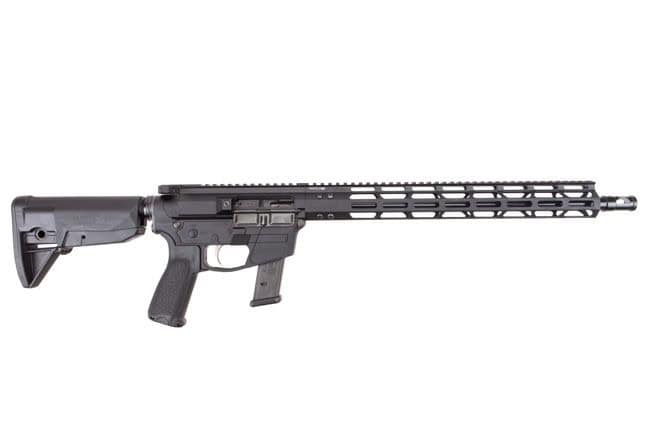
Do you have a “Frankengun” in your safe, or maybe just a lower you’ve been trying to decide what to do with? Why not consider a pistol caliber carbine (or PCC)? There are a number of conversions that can be found to convert your AR from 5.56 into a 9mm, .40 or .45 caliber carbine. Personally, I have that “Frankengun” that was built out of spare parts and a cheap barrel that I threw together. I had the parts so why not, right? Unfortunately, it’s not an accurate rifle (factory second barrels are cheap for a reason), which is why I want to upgrade it. It is, however, a fun build that I want to keep. So, after some thought I’ve decided to convert it to a pistol carbine in 9mm. I’ve always enjoyed shooting PCCs and I won’t be losing anything, but rather gaining a lot.
There are a number of advantages to a rifle shooting pistol rounds and it’s a concept that’s been around since the wild west days. The 2 biggest being the pistol caliber in a rifle is easy to shoot and by having 2 firearm types that take the same ammo and mag means less to carry in the field or in competition. PCCs are just flat out fun to shoot and a lot cheaper to run than 5.56. They also make a great long gun for home defense, and, can take the same magazines as some popular side arms. One main item to be decided upon first in your conversion is which magazine would you like to use. The 2 main ones commonly found are either the Glock magazine or the Colt magazine. If you already have a Glock then the choice will be easy. Pricewise the 2 options are comparable. The biggest differences are that the Glock mags are polymer and found in big box stores all around. The Colt magazines are made of stainless steel and are mostly found online. Once you decide that the rest of your decision will be based on price and desires. Personally, I’m leaning toward the Glock mags. They are easy to find and if I’m lucky I’ll have an excuse later on to get a new Glock. (Probably not, if my wife reads this.) Let’s go through some of the products I’ve found and why I’ve narrowed it down to these.
The easiest way to convert your existing AR is by getting a dedicated upper. At one time building your own AR was a cheaper way to get one of these wonderful shooting platforms. However, in the last 10 years or so a plethora of AR components have hit the market. Upgrades as far as the eye can see. Major advances in manufacturing not only give you more options in looks and function, but also more options in coatings and materials that makes your favorite rifle shoot better and last longer. However, these parts add up. An extra $20 here, an extra $25 there plus shipping from multiple locations and now you’ve got a build that cost more than just buying it complete from someone else. Of course, this is only true if you like all the components of the complete upper that you purchase. If you like the parts but maybe want to replace the rail or flash hider, you are right back at the cost of building out an existing gun. If you are not familiar with building an AR or you are looking to save cost, buying a complete upper would be the way to go. Complete uppers start around the $400 mark and will easily attach to an existing AR lower. They are compatible with mil-spec parts, lowers, and most upgraded triggers on the market. The rest needed would be a magwell adapter (roughly $180) and a new buffer spring and buffer (roughly $50). Making a grand total of $630. If you already run an extra heavy buffer and spring in your AR you might be able to get away without getting the new one. But for $50 it’s recommended to go ahead and get a new one that is definitely compatible.
Here are a couple of complete uppers I saw that look like a good deal at a good price.
PSA came onto the scene a few years with good quality and good prices. I’ve been to 2 of their locations in South Carolina and I can tell you it’s not a disappointment. If I ever win the lottery, they would become my new toy stores for sure. A company with an eye for quality firearms for sure. For $300 to $430 you can get a solid built 9mm dedicated optics ready flat top upper with a free-floating M-Lok rail and a stainless-steel barrel. At the time of this article these uppers sell for a regular price of $429.99, however, they do run sales from time to time putting the cost in the mid-$300 range. Conversely they have a basic M4 style upper with plastic handguards, F marked front sight base, sling swivel, flat top receiver, and a melonited mid profile barrel with a MSRP of $399.99. Both packages are great values and comprises of quality components. I highly recommend either setup for a great day of shooting.

In my search I ran across this company’s name several times prompting a bit more research. I found a conversion kit that definitely peaked my interest. The KG Defender 9mm 16”Upper with Endomag Conversion Kit has a lot to offer for a low price. This complete upper is priced at $334.99 and comes with freefloating M-LOK aluminum handguards, salt nitride bath vanadium barrel, A2 flash hider and, most importantly, 1 Mean Arms Endomag Insert for standard 30 round AR P-Mags. This last item is what really peaked my interest. As I stated above, in order for the PCC conversion to work you need a magwell adapter to use pistol magazines. However, with the Endomag insert you can change a 30 round P-Mag to accept 9mm rounds, without any permanent modifications. Thereby using your existing AR mags and no need to have an inconvenient mag adapter to remove in order to change the lower back to shooting 5.56. Another nice thing about this is the look of the gun itself. In my research I noticed a complaint about PCCs is the look of a “skinny stick mag hanging out of the magwell.” The width of a pistol magazine is about half of what an AR mag is leaving a large empty space at the bottom of the gun. Now this may or may not be an issue for you but if it is, this would be a great way to eliminate that issue. Spare Endomag inserts cost $29.99 from Mean Arms website if you’d care to have a few spares. Something most avid shooters see as a must have. Add the price of the upper and 2 spare Endomag inserts and you have a grand total of $394.97. A great value all in all and you will be ready to shoot.
The last upper that caught my attention was by Foxtrot Mike. Before this search I have never heard of this company. However, the upper itself had 1 component that stood out from the rest. A forward charging handle. For years consumers have been asking for a forward or side charging handle on their ARs to mimic the feel and function of their AKs or MPs. Most rifles in the Modern Sporting Rifle arena have this feature. What’s nice is that you have the ability to manipulate your firearms action without taking your hand off of the grip. A plus for faster reloads and clearing common range malfunctions. This complete upper comes with that forward charging handle built into the upper that is non-reciprocating and ambidextrous. The upper comes with a M-LOK freefloating handguard that blends well with the upper receiver, giving it a sleek monolithic look, and houses their proprietary forward charging handle. Combine that with a chrome vanadium barrel and FM muzzle brake, it is a solid package at $425. One down side to this is if you are not a fan of the rail system you will be out of luck, since it houses the proprietary forward charging handle.
There are many more manufacturers and options to choose from for a complete 9mm upper, however, these were my top 3 to look further into. Like anything in the AR world, if price wasn’t an issue, the sky is the limit to what you can find. However, we are not all independently wealth so price is a consideration when looking at the options. You can get an upper built and set up with an Aimpoint reflex sight, quad rail, billet aluminum receiver, pop up front and rear sights, and angled forearm grip for around $1000 or more. If that’s what you want and your budget allows for then by all means get it. If you want a good deal on quality components with extras, these would be a great place to start and can easily fit into the tighter budget.
If you are like me, building a gun is far more fun them just buying one. I have recently finished a custom rebuild on my old Charles Daly government 1911 changing out parts and doing a custom ceracoate finish in a distressed American flag. Did I need it? Nope. Why did I do it? Because I could and wanted to. So, while the complete upper is the easiest and most fool proof way to convert my AR, I can’t help but want to buy the parts and convert it myself. Some things can be pretty standard like the buffer and buffer spring (there are several manufacturers but not a lot of differences in price, design or quality). However, if you look hard enough, you’ll even find things like custom tuned pistol caliber buffers that allow you to change the weight in the buffer to tune your gun to your favorite load. The general consensus is that these are not needed. But things like the barrel, flash hider, magwell adapter, and bolt carrier group are much more personal in choice and allow you to have that one of a kind PCC you envision. Of course, much to my wife’s chagrin, that’s the route I want to take.
On the low side of the budget I can get away with about $615 plus shipping, but it can run up to $1000, depending on how I want it to turn out. This can be a bit difficult to search since there are so many manufacturers out there and so many websites out there. It can be overwhelming to figure out who is honest in their marketing and which website you should trust. For me buying quality parts from a name I can trust is more important than price. I look for a good deal, but will pay a little more to know the purchase will make me happy. Unless you have a major name manufacturer or large gun store local, chances are you won’t find the parts in your mom and pop shop to put your hands on and will be forced to use the internet to order your desires. Over the years being in the firearms industry I’ve been fortunate to meet and work with a great many of these people and have learned what to look for in an honest website. A few websites that I trust would be Brownells and Midway (arguably the 2 biggest firearms parts distributors in the country). Others would be AIMS Surplus, Rainier Arms, Sportsman Guide and many others. As far as parts go, I have certain things I like to look for. Component’s materials and finishes are big on my list as this is what will dictate the longevity of that parts and the firearm. From this point I look at price and compatibility. For this I’m starting with an AR that’s a complete build and needs some upgrades. I’ve decided on changing calibers because I’ve always wanted a PCC and one of the main components I need to change is the barrel.
Let’s talk barrels first. This is after all the heart and sole of the gun and what makes the round hit its target. My top preference is a barrel made from stainless steel. It’s high quality steel that holds up for a long time. One of the issues with chrome lined and chrome vanadium barrels of the past is that the chrome does not coat evenly and will wear out eventually. Stainless steel barrels are higher quality, will last longer and are true cut bores with no other materials added. Those tiny imperfections of chrome being added affects accuracy. A barrel that’s cut from stainless and has nothing added allows for more consistent twist as the bullet travels down the barrel. This gives you higher velocities and better accuracy. It also holds up to wear and corrosion a lot better. A common misconception about stainless steel is that it is rust proof. It is not. It can and will rust given the right amount of abuse. However, it is highly corrosive resistant, meaning unless you leave your barrel in salt water for extended periods of time or refuse to clean it for 10 years you can have faith that your barrel will last for generations.
Two down sides to stainless steel is that it tends to be made in a heavier profile and captures light and attention. Most stainless barrels come in a medium or heavy contour. The purpose behind these profiles is to add weight, reducing recoil, and dissipating heat, by having more surface area. This adds quite a few ounces in weight. Which might not seem like much at first but after an hour or two at the range or a day shooting a competition those ounces start to feel like pounds. Since you are shooting pistol rounds out of a carbine, weight is not really needed like it would be in rifle rounds. However, if you are a range junky the ability to dissipate heat would be a huge plus. The more surface area on your barrel the better it dissipates heat. When you realize how quick you run through a few hundred rounds in this new, fun setup you will want that ability to cool the barrel quicker. In terms of light reflection, even a stainless-steel barrel that has been sandblasted to give it a matte finish will still show up quickly to the human eye, due to its light color. You may like that 2 tone look and not care about the barrel standing out, but if you want that all black sleek design then this option may not be for you.
Other than stainless steel I look for barrels that have been ION Bonded, melonited or given a salt nitrate bath. These processes make lesser materials like chrome vanadium a newly viable option. The process seeps into the porous surface of the metal giving you no added imperfections and a hardness and corrosion resistance that cannot be beat. There are many folks that will even argue that these processes make a lesser metal like chrome vanadium just as accuracy and long lasting as stainless. An argument that I have experienced to be true. Their biggest up side is that they are high quality but at a lesser price. I’ve seen and used both and can tell you first hand, either will make you happy and will last.
There are 2 options for magazine compatibility when it comes to PCCs. The first is a magwell adapter. This is an aluminum part that fits inside the existing magwell that allows you to use a pistol mag (Glock or Colt). The part cost around $180 depending on the manufacturer and is made by multiple reliable manufacturers like Stern Defense or Spikes Tactical. There is even one made by ProMag for $44 that is made from polymer. The vast majority are LRHO (Last Round Hold Open) meaning they lock open on an empty mag. A wonderful feature that will match with your normal reload routine running your existing AR and pistol. The nice thing about these is the ability to use existing pistol mags with your new PCC. The Glock compatibility is the most popular. You can use a G17/G19 mag or even the 30 round G18 mags with these and run 2 guns with the same mags. This crossover holds multiple benefits in training and competition shooting as well as tactical or defensive scenarios.
If you research these conversions you will see that there are some complaints about the inserts. The 2 most common were “some of the inserts can be finicky” and “that the look of the pistol stick mag hanging from the magwell looks stupid.” As far as some being finicky, I can tell you no one manufacturer stood out from another as being a problem. In the world of ARs and custom-built guns, finicky can happen. It’s just part of the nature of manufacturing. When you start adding different manufacturers together you will soon realize these “lego” guns aren’t all exactly the same. Tolerances can be different between parts as the standard of manufacturing dictates and everyone has their own opinion of what the tolerances should be. Personally, I enjoy this challenge. Taking a part and working it to fit is what makes a custom gun custom. Have you ever seen the video from Midway’s CEO as he fits a new stock to a deer rifle? He doesn’t just bolt it on. He laps it, pours the acrylic bedding, and hand fits the 2 pieces together to ensure a perfect seating. While nobody expects that level of work to make an AR run some fitting or trial and error may be required when building with multiple manufacturers. It’s just the nature of a build. Keep that in mind as you decide what to do. If this is not in your wheelhouse you can either get a dedicated 9mm lower receiver or you can use an Endomag.

Endomag came out earlier this year, and from what I can see, works well. It is an insert that goes into a Magpul 30 round P-Mag making it compatible to load 9mm rounds. The complaint of the pistol mag looking stupid is alleviated with this insert. Your full-sized P-Mag fits and looks the same as if you were running the standard 5.56. Also, if you’ve already trained extensively with your AR and reloading it on the run, the size and feel of these P-Mag will work with your muscle memory better. This is a relatively new product so longevity is still unknown, but the reviews thus far have been excellent. They run $29.99 for 1 or a 3 pack for $79.99. That makes them a bit cheaper as well. I haven’t fully decided between the 2 options and I wish all others the best of luck in their decision. Either conversion will work and definitely meet the need. Again, if you already have a Glock 9mm the ability to use the same mag in both guns is highly appealing and will probably make your decision.

As far as muzzle brakes go, they are as varied in the 9mm market as they are in the 5.56. Their two main selling points are either to reduce the flash or compensate muzzle rise. Generally speaking a muzzle brake will do one or the other, not both. Decide how your gun is going to be used and what best serves your purpose. These can run you anywhere from $40 to $160 plus. They are highly personal and seem to have almost as much to do with look as function. I’m leaning toward a decent flash hider that has been melonited. I plan on keep this around for home defense as well as range time and the ability to reduce the flash in low light levels appeals to me. A word to the wise. Compensators are amazing at reducing muzzle rise, keeping you on target better. However, they produce a lot of pressure at the muzzle and will rattle your fillings if you stand next to the shooter. They are also loud so hearing protection is a must.

These are very important and the materials and finishes follow the same thinking as barrels. There are again, quite a few on the market. A number of them are Salt Nitride bathed or ION Nitrided which are extremely durable and smooth running. They are usually ramped and compatible with both Colt and Glock mags. Of course, buyer beware. Read the specs before buying the first one that’s cheap to ensure that is works with the mag system you choose. One I’ve found that is a nice feature worth paying for is the ADK 9mm ION Nitride bolt carrier group. High quality materials and finishes are topped off with a removable weight that allows you to possibly run your existing buffer system without having to replace your buffer with something heavier. It’s a big plus for the budget minded builder who is looking to keep the leftover parts to a minimum. Most of these bolt carrier groups run about $100 but can get a bit higher. The ADK BCG retails at $160 and may be worth the extra with that removable weight.
Whether you ultimately decide on solid manufacturing and buy a complete upper or think like me and look forward to a new build, there are quite a few options out there. For me quality is truly the top option, and a close second is price. You get what you pay for but there are deals to be had. I looked at both complete uppers and parts builds and came out to a budget of about $650. My top choice for a complete upper is Palmetto State Armory. Good parts at a good price is the best way to describe their products. As far a build goes, I’ve still got some decisions. A 16” light weight barrel (from Battle Arms Development), ADK BCG, and a decent flash hider are definitely on my list. This will make my setup fun, lightweight, and reliable. The decision between the Endomag verses the Stern Defense magwell adapter will probably be based on whether I can talk my wife into letting me buy a Glock.
Jonathan has been in the firearms industry for 12 years. Most recently becoming an NRA Pistol Instructor and NC Concealed Carry Instructor. He also has competed in both 3 Gun and IDPA. Jonathan graduated from The Ohio State University with a Bachelor of Arts degree in Journalism.
The demands for a big, but lightweight titanium watch become realized in the new TaWaTec – Black Titan Diver Tactical ICS. For ore than a year, the titanium watch has been field-tested by various specialists and government units.
Jody Lewis shares his experience with Kel-Tec’s 30-Round .22 Magnum Semi-Automatic pistol. It is no secret that I’m a Kel-Tec fan boy. It first started when I bought…
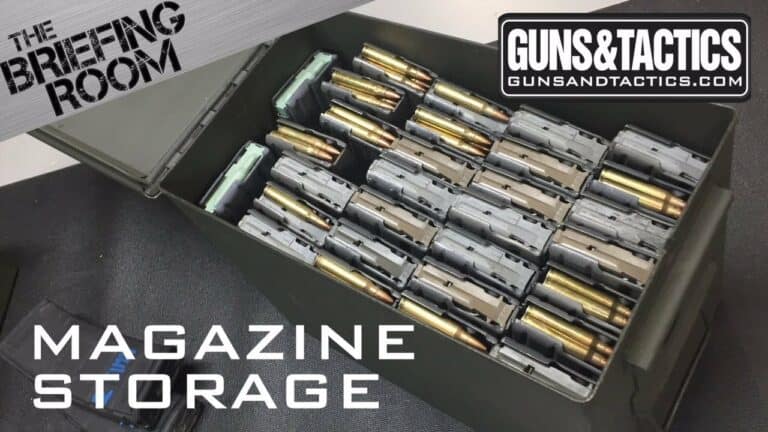
Starting next Thursday, April 11th at 2 PM EST, Magpul’s new Rigger knife will go on sale at the magpul.com website. Don’t miss out. This is a limited run of only 200 individually numbered knives.
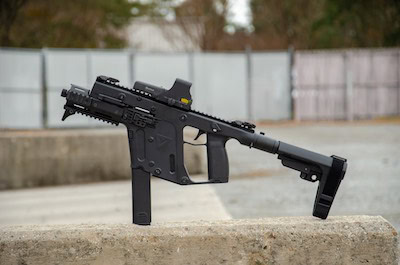
November 27, 2018 – Chesapeake, Virginia, USA – KRISS USA is now shipping the Vector SDP Enhanced, a new pistol arm brace model, to distributors and direct dealers…
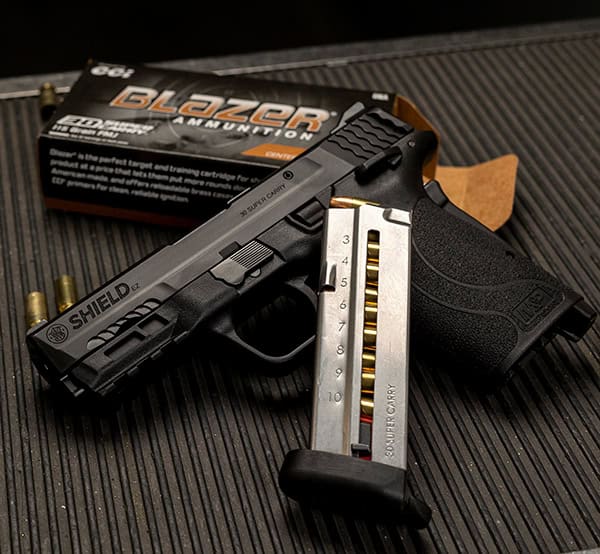
CCI Ammunition announced its loading of the new 30 Super Carry cartridge in Blazer Brass while at the SHOT Show.
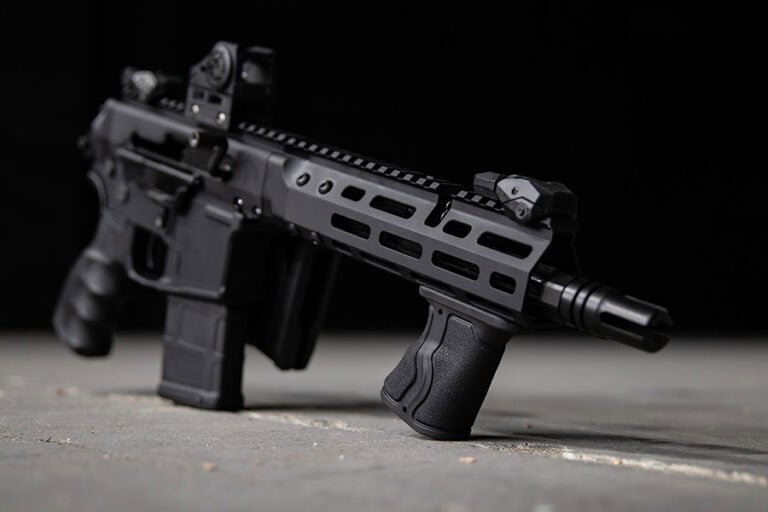
F.A.B. Defense is pleased to announce the Gradus-M as the latest addition to the Gradus line of accessories.
© 2025 UN12 Magazine
© 2025 UN12 Magazine
Wait! Don’t forget to